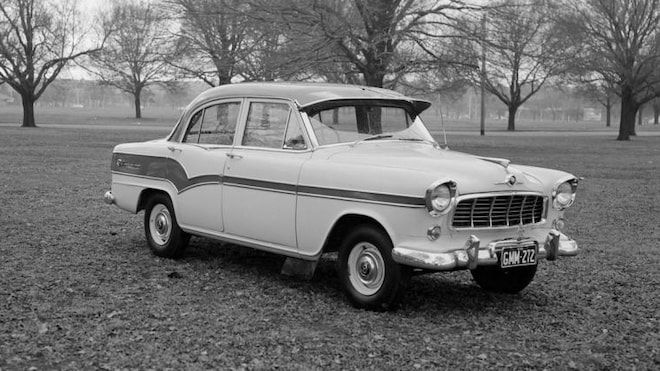GM's Holden Brand Is Dead: Australia Loses Australias Own Car

Mark Reuss is widely credited for helping save Australias only indigenous auto marque when he served as president and managing director for Holden Limited from February 2008 to July 2009. Reuss returned to Michigan from Australia, just as parent General Motors was entering bankruptcy, and eventually was named the global corporations president. Eventually he brought over Australian designer Michael Simcoe, who in 2016 replaced Ed Welburn as GMs vice president of global design. It was the bankruptcy, and New GMs quick return to profitability after theGreat Recession that made it easy, or inevitable, for the corporation to announce this week it would shutter whats left of Holden by 2021. Until the bankruptcy, GM was loath to cut low-profit brands, although Chevrolet sub-brand Geo had come and gone since the 80s, Oldsmobile died in 2004, and Hummer had lasted only about a decade. GM sold unprofitable Opel and Vauxhall, the German and British marques it had owned since the 1930s, in 2017 to PSA Peugeot Citron, which quickly turned them profitable. Much of this downsizing has been credited to Mary Barra, who became GMs CEO in 2014 and has proved relentless in shedding unprofitable units. That would entail operations in the very tough European Union, where the German brands rule and stringent new CO2 emissions standards make it harder for any major automaker to make a profit. This also applies to Australia, certainly one of the most unusual markets to have exported cars and light trucks from its single homegrown mass-market brand, Holden (which briefly sold left-hand-drive cars in the U.S. through Pontiac dealers in the late 50s, similar to Buicks arrangement with Opel). The relatively isolated country has a population of 25.4 million, just a couple hundred thousand more than the state of Texas. Although I couldnt find a sales figure for 2019, the ABS Motor Vehicle Center says the total number of registered vehicles there is 19.2 million. Thats the entire fleet, old and new, just a couple million more cars and trucks than the number sold in the U.S. in 2019 alone. In a 2014 article, The Sydney Morning Herald blamed Australias decaying local auto industry on one of the lowest [import tariffs] in the world at 5 percent. In the early 1980s, the tariff was 60 percent, but the 1984 Motor Industry Development Plan reduced it by 2.5 percent per year between 1988 and 2000, and by another 5 points in 2005. It was less than 5 percent under a bilateral trade agreement with ASEAN countries, the U.S., Chile, Malaysia, Singapore, and Thailand. Local manufacturing may be disappearing, as GM and Ford Motor Company both announced in 2017 they would close Australian assembly plants. Imports, mostly Asian, have kept auto prices competitive there, and thanks to regulations and fuel prices, smaller front-wheel-drive cars are replacing bigger six-cylinder and V-8powered American- and European-style models. Holden discontinued its iconic rear-wheel-drive Commodore and Caprice sedans, leaving a lineup of rebadged front-drive-based Chevys, GMCs, and Opels. (It also sells the C8 Corvette , though from the website there are no signs of either Chevrolet or Holden badges on it, and its apparently sold there with left-hand drive.) In the 1960s and 70s, GM, Ford, and Chrysler produced models there for the local market that looked more like American iron than European cars. The Chrysler Valiant and Charger touted six-cylinder Hemi and small V-8 engine options, and there was a tremendous mix of American and European Fords built in Aussie factories, all with right-hand drive. Americans became vaguely familiar with this distinctively Australian iron in George Millers apocalyptic, post-OPEC-embargo Mad Max (1979) and Mad Max: Road Warrior (1981), with Mel Gibson behind the wheel of a Ford Falcon XB GT with a supercharged V-8. The cop car stolen at the beginning of Mad Max , which Gibsons Max later drives in a key scene, is a 1972 Holden Monaro. James Alexander Holden opened a saddle and leather business in Australia in 1856, later adding horse-drawn carriages, and in the early 1900s, car bodies for other manufacturers. It went GM-exclusive in 1924, then became a GM subsidiary in 1931, building Chevys, Pontiacs, Oldsmobiles, Buicks, and LaSalles for the local market. Holden didnt build Australias Own Car until November 1948. I outlined this history in a feature for the Spring 2011 issue of Motor Trend Classic, on the 1959 Holden FC Special that Mark Reuss brought back with him after he returned to Michigan in 2009 . The 48 Holden was based on the stillborn 1940 Chevrolet Kadett compact prototype. A decade later, Reusss 59 FC looked like a 7/8-scale 1955 Chevy Bel Air, 20 inches shorter, 750 pounds lighter, with a Chevy-based 2.2-liter OHV I-6 powering the rear wheels through a three-on-the-tree. People think its a 55 Chevy, Reuss said in that article. They see me driving on the right and do a double take. Like GM in the U.S., Holden held more than half the market share in Australia in the 1950s, easily dominating the Ford, Chrysler, British Leyland, and Toyota competition. All these brands emphasized their sturdy construction and heavy-duty suspensions for handling the Australian Outback (Reusss 59 FC has a soft, yet well-controlled ride, with long suspension travel). Panel vans and utes, El Camino-style pickup trucks, were built off the Holden sedans. By 1968 an all-new Holden line with a 307-cubic-inch V-8 option featured the Monaro coupe, with sheetmetal resembling the 68 Olds Cutlass. Holdens first production muscle car that year was the 4-4-2like Monaro GTS 327, with an Aussie-built 327-cubic-inch V-8 rated for 250 horsepower, and available with a four-on-the-floor or a floor-shifted Powerglide automatic. By now V-8s were the hot thing in Australia, though rugged, dependable inline-sixes among myriad brands were still very popular in family cars. The Monaro two-door hardtop coupe evolved into the early 00s model that Bob Lutz cribbed for the revival here of the Pontiac GTO, and shortly after GM imported left-hand-drive versions of the RWD Commodore sedan to create the late 2000s G8. A wagon and a ute Pontiac pickup were planned, but never arrived. Which brings us back to GMs bankruptcy. It has not been an easy time for enthusiasts, especially us old timers, some of whom still yearn for Pontiac. Since it dropped the Pontiac, Saturn, and Hummer divisions in 2010, GM has also added a couple of Chinese nameplates to its lineup (and Ariv eBikes, of course), but Im impressed with its restraint on paring down brands and markets to the size of a mobility company that should serve it well through 2030. This is under CEO Barras leadership, for sure, though Id bet that Reuss, the son of a GM exec who rose through the ranks during the automakers glory years, is also an architect of this editing down of unprofitable units. Good business sense beats sentimentality, but we can still hang on to artifacts: Im told Mark Reuss still owns his 1959 Holden FC Special. The post GM's Holden Brand Is Dead: Australia Loses Australias Own Car appeared first on Hot Rod Network .
http://www.hotrod.com/articles/gm-holden-brand-australia-discontinued/




